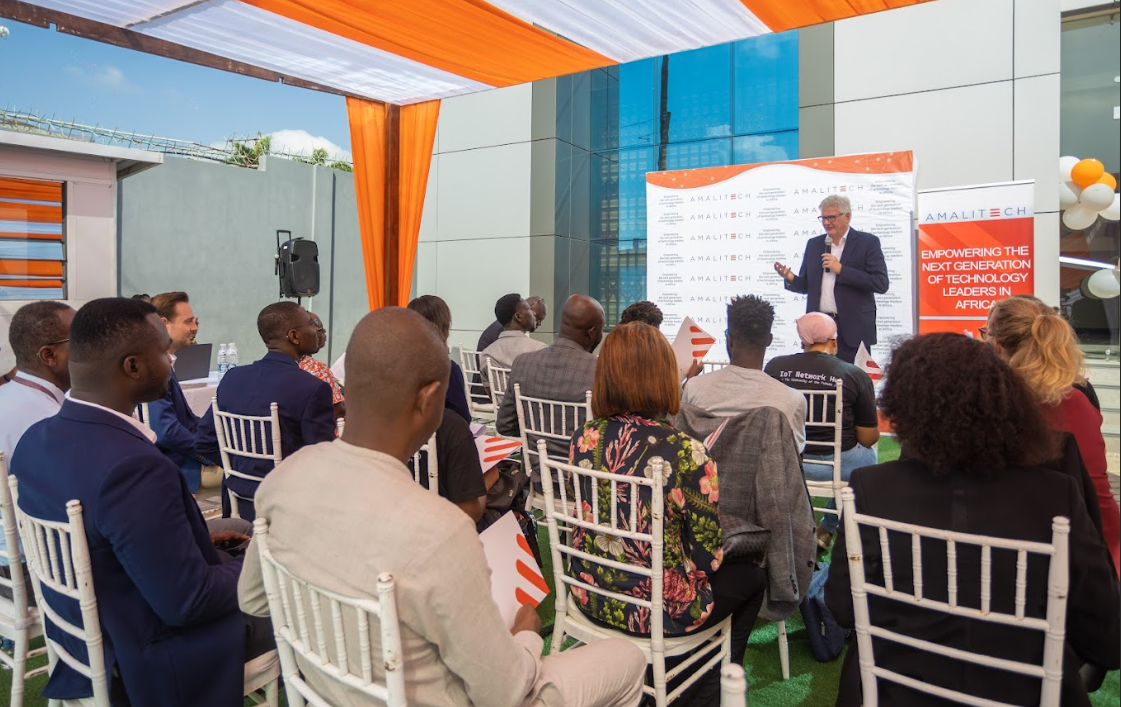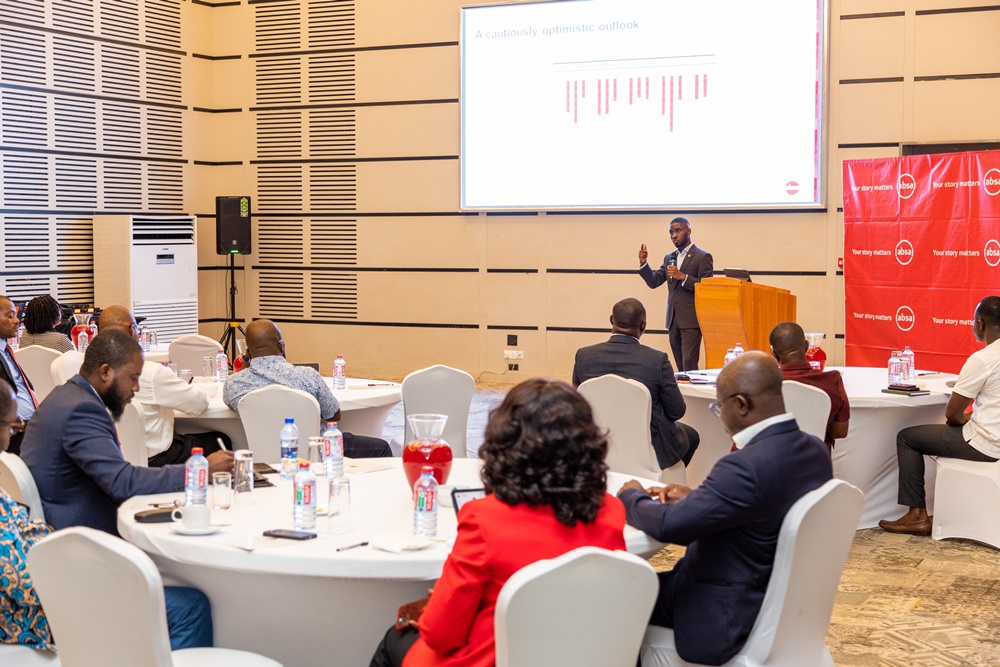
The migration of skilled and educated young people from any economy presents significant challenges for businesses and the government. Over the last century, Ireland, Italy, and Latin America have suffered and to various degrees of success recovered from its devastating effect.
Probably, only Asian economies like Japan, South Korea, Malaysia, India, and China have succeeded in using their youth migration to build long-term benefits in terms of acquiring technology, know-how, and other economic benefits.
In recent years, Ghana has seen an increasing number of its youth and talent moving abroad in pursuit of better opportunities, influenced by factors such as the desire for advanced education, improved employment prospects, social security, superior living conditions, and economic hardship.
Emigration trends and skills distribution among Ghanaian youth
According to a 2021 GALLUP poll, 53percent of Ghanaians would emigrate if they had the opportunity. Of those leaving currently, data from KNOMAD shows the distribution for the top ten destination countries for Ghanaian youth emigrants as the United States, United Kingdom, Germany, Canada, Italy, Netherlands, France, Australia, South Africa, and Nigeria.
The United States and the United Kingdom alone attract approximately 5,000 and 4,000 young Ghanaians annually, respectively. Canada follows closely with around 3,000, while Germany and Italy each receive about 2,000-2,500 Ghanaian youth annually.
The skills distribution among these emigrants varies significantly by destination. For instance, in the United States, 25percent of Ghanaian youth work in information technology, 20percent in healthcare, and 15percent in engineering. In contrast, the United Kingdom sees a higher proportion in healthcare (30percent) and business/finance (20percent).
Germany has a strong presence of engineering professionals, accounting for 30percent, and information technology specialists at 25percent.
In countries like Italy and the Netherlands, the distribution skews towards lower-skilled labour, particularly in agriculture and service sectors, alongside a smaller share of professionals in healthcare and engineering.
These trends underscore the complex interplay of global economic conditions, local socio-economic factors, and the aspirations of Ghanaian youth, making emigration a multifaceted phenomenon that requires nuanced understanding and strategic policymaking.
This trend exacerbates the brain drain of professionals and educated individuals from Ghana as they seek better opportunities abroad. The Economist presents a global picture which highlights the potential net migration trends of graduates from 2021 to 2023. It reveals significant inflows to countries where economic opportunities, the state of political inclusion and stability, and social conditions are favourable and vice versa.
Individuals migrate to developed countries for better job prospects, higher wages, and a better standard of living. Political changes and the pursuit of a higher quality of life also play significant roles.
For instance, many graduates from countries like India and China move to the United States or Europe for enhanced career opportunities, while political instability in the UK post-Brexit has led some to relocate to other EU countries. In developing regions like Africa, the reasons for migration are more pronounced. Political unrest, corruption, and conflicts further exacerbate the situation, compelling more skilled people to seek a better life abroad.
Silver linings on a dark cloud
For businesses, losing young talent means a shrinking pool of skilled workers. The outflow of young professionals undermines efforts to build a robust and dynamic economy, stifling innovation and growth, and driving competition for the remaining talent. Organisations in the public and private sectors, faced with the reality of youth migration, have no more choice than to invest in training and development programs to raise the productivity of their human resources and leverage technology to bridge the numbers and skills gap.
In skill markets where a lack of jobs and roles is the core driver of migration, government and industry must prioritise new partnerships that create an enabling environment for job creation, enhance education and training, and ensure political stability. Investments in infrastructure and technology are crucial to retaining and attracting young talent and fostering a vibrant, sustainable workforce in Ghana.
As with the Asian tigers, there are potential positive aspects if the migration of talent is managed strategically and effectively. The diaspora can contribute to the economy through knowledge transfer, technology infusion, access to innovation networks, and remittances. Encouraging and facilitating reverse migration and leveraging the skills and experiences of Ghanaians abroad could also benefit the country in the long run.
Understanding and addressing the root causes of youth migration
Understanding and addressing the root causes of youth migration is essential for Ghana’s sustainable development. Engaging stakeholders and the migrating youth in meaningful discussions and implementing strategic policies can help mitigate the adverse effects and harness the potential benefits of this global trend.
Strategic solutions for mitigating youth migration
Ghana faces a significant emigration crisis, with many young, talented individuals seeking opportunities abroad. This trend poses a risk to the nation’s economic growth and social stability. To counteract this, Ghana can learn from the successful strategies employed by other countries to either reverse emigration or turn it into an economic asset.
This article outlines a comprehensive plan incorporating economic incentives, educational initiatives, diaspora engagement, legal reforms, cultural programs, technology hubs, and rural revitalization. By targeting both Gen Z and policymakers, the strategies aim to create an environment where young Ghanaians can thrive and contribute to national development.
- Creating a conducive job market
Imagine a Ghana where young people no longer feel compelled to leave in search of better opportunities. By fostering a vibrant startup ecosystem, we can make this a reality. Government initiatives that support startups and small businesses can create a wealth of job opportunities. Germany and Israel, for example, have transformed their economies by nurturing start-ups through favourable regulations, tax incentives, and access to capital.
The government can also consider a model such as the UK’s apprenticeship levy, which has helped thousands of young people gain valuable skills. Companies also have a role to play. By offering internships and apprenticeships, they can provide young professionals with the practical experience they need. Together, the government and the private sector can build a resilient job market that keeps our talent at home.
- Economic incentives and development programmes
One of the foremost strategies is to stimulate economic growth through targeted incentives and development programmes. South Korea’s GDP per capita increased from around US$150 in 1960 to over US$10,000 by the late 1980s following this model. Ghana can establish tax incentives and subsidies for startups and small businesses will encourage entrepreneurship and job creation and economic development zones to attract investments in technology, manufacturing, and tourism. Infrastructure projects, such as improving roads, ports, and energy supply, should be prioritised to give young people a reason to stay and build their future in Ghana.
- Educational and skill development initiatives
Education is crucial for retaining talent and fostering innovation. Finland’s education system, with its focus on creativity and critical thinking, shows us what is possible. Germany’s dual education system combines classroom learning with hands-on training, producing a workforce ready to tackle industry challenges. Singapore’s GDP per capita grew from around US$500 in the 1960s to over US$60,000 by 2020. Similarly, China’s investment in R&D grew from less than 1percent of GDP in 2000 to over 2percent by 2020, and its GDP per capita rose from US$1,000 in 2000 to over US$10,000 by 2020.
Ghana must adopt an active approach to tackle youth migration by enhancing education and aligning it with market needs. First, increase funding for STEM education and vocational training to equip students with skills that meet current job market demands. Next, update educational curricula to transition from theoretical teaching to practical, real-world preparation. Forge partnerships with foreign universities and companies to offer scholarships and internships abroad, with clear agreements for participants to return and apply their skills locally.

Additionally, establish a national talent pool database to connect skilled graduates with local job opportunities, ensuring that their education leads to tangible economic contributions. By implementing these strategies, Ghana can create an environment where young people find career and vocational paths that align with their talents, skills, and ambitions, reducing the drive to emigrate.
- Improving living conditions
Living in a country where modern infrastructure and high living standards makes staying an easy choice. Singapore’s journey from a developing nation to a global city-state is a testament to the power of strategic infrastructure investment. Improving healthcare services and providing affordable housing can make a significant difference in the lives of young professionals. Sweden’s comprehensive welfare system ensures that its citizens have access to the essentials they need to thrive. We are capable of creating a youth-friendly Ghana where young people choose to build their future because living conditions are not only bearable but desirable.
- Ensuring political stability
A political environment where young Ghanaians feel valued and heard, building a stable foundation for our nation’s future is non-negotiable. Visualize a Ghana where trust in the political system is high, and governance is transparent and effective. Countries like New Zealand and Denmark have built such trust through low corruption and high accountability. Rwanda’s inclusive governance model shows how involving youth in policymaking drives national recovery and development. We can similarly promote good governance and involve young people in decision-making processes to ensure that youth voices are heard and their needs are met.
- Leveraging technology
Embracing technology to create a future where our young people can thrive locally while connecting globally is in our best interest. The pandemic has proven that remote work is viable and can open new avenues for employment. Estonia’s e-Residency programme has turned it into a global tech hub, showing us what’s possible. Encouraging remote work can also make a difference, allowing Ghanaians to work for global companies without leaving home. Imagine Ghana as a hub of digital innovation, where technology drives growth and opportunities abound. By investing in digital infrastructure and encouraging tech innovation, we can position ourselves at the forefront of the digital economy.
- Engaging the Diaspora
Think about the immense potential of our diaspora. Ghanaians who have gained skills and experience abroad and are eager to contribute to national development. India’s success with its global diaspora in the tech industry highlights the benefits of such engagement. Developing return migration programmes can encourage skilled professionals to return. Establishing networks for knowledge transfer and investment can further drive growth. The Philippines’ Overseas Filipino Workers Programme is a shining example of how remittances and diaspora engagement can boost the economy. Let’s tap into this resource to build a stronger, more prosperous Ghana.
Diaspora engagement policies:
Engaging the Ghanaian diaspora effectively can play a significant role in reversing the brain drain and fostering national development. Learning from the success stories of countries like India and the Philippines, Ghana can develop robust policies to encourage skilled Ghanaians abroad to contribute to the nation’s growth.
- Leveraging remittances
Remittances are a vital source of income for many households in Ghana. To maximize their impact, the government can create investment channels that allow remittances to fund development projects, small businesses, and community initiatives. India has successfully harnessed remittances through structured investment opportunities, driving significant economic growth.
- Knowledge transfer programmes
Countries like China and South Korea have implemented programmes that facilitate knowledge and technology transfer from their diaspora. Ghana can establish similar initiatives by creating networks that connect professionals abroad with local industries and academic institutions. For instance, virtual mentorship programmes and collaborative research projects can enable diaspora professionals to share their expertise without relocating.
- Incentivising return migration
To attract highly skilled individuals back to Ghana, the government can offer incentives such as tax breaks, housing subsidies, and funding for startups. Rwanda’s “Come and See, Go and Tell” program has been effective in encouraging the return of its diaspora by showcasing the opportunities available in the country. Ghana can adopt a similar approach by highlighting success stories and potential career prospects.
- Diaspora bonds
Issuing diaspora bonds is a proven strategy to raise funds for national development. Israel and India have successfully used diaspora bonds to finance infrastructure projects and boost their economies. Ghana can introduce such bonds, offering attractive interest rates and guaranteeing returns, to engage its diaspora in national development financially.
- Cultural and social engagement
Maintaining cultural and social ties with the diaspora can foster a sense of belonging and national pride. Ghana can organise cultural festivals, national day celebrations, and professional networking events in countries with a significant Ghanaian population. These activities can strengthen the emotional connection to the homeland and encourage contributions to its development.
- Legal and policy reforms
Implementing legal and policy reforms to create a supportive environment for returnees and local talent is crucial. Simplifying bureaucratic processes, protecting intellectual property rights, and ensuring political stability can make Ghana an attractive destination for both returning diaspora and foreign investors.
- Enhancing infrastructure and connectivity
Investing in infrastructure and improving connectivity is essential for supporting economic activities and retaining talent. Developing reliable transportation, energy, and communication networks can facilitate business operations and improve living standards, making Ghana a more attractive place to live and work.
Ishmael Yamson & Associates run a poll over 2 weeks on LinkedIn to understand the perspectives of professionals on the strategies that should be prioritised to address the migration of talent from Ghana. The poll results reveal distinct preferences among participants regarding strategies for addressing youth emigration and fostering national development in Ghana. The results from 210 votes were as follows:
A significant 38percent of the respondents believe that supporting startups and businesses is the most critical approach. This indicates a strong belief in entrepreneurship as a driver for economic growth, job creation, and innovation. The high percentage suggests that participants see the development of a vibrant entrepreneurial ecosystem as essential for retaining young talent in the country, offering them opportunities to thrive without the need to emigrate.
Another 35percent of participants prioritise improving living standards, reflecting the importance of creating an environment where young Ghanaians find their quality of life satisfactory. This focus on enhancing healthcare, housing, and overall infrastructure highlights the belief that better living conditions are crucial for retaining the population.
Meanwhile, aligning education with market needs received 24percent of the votes, showing that while education is valued, it is seen as part of a broader strategy rather than the primary focus. The lowest priority, with only 3percent, is leveraging diaspora talent, suggesting that participants might view the engagement of the diaspora as less immediate or impactful compared to the other strategies.
Final thoughts
Addressing the root causes of youth migration and leveraging the potential of the Ghanaian diaspora requires a multi-faceted approach aligned with key focus areas. To support startups and businesses, Ghana should implement economic incentives and development programs, create a conducive job market, and leverage technology to foster growth and innovation. Improving living standards by enhancing living conditions and ensuring political stability will help retain talent and improve overall quality of life.

Aligning education with market needs is crucial; thus, prioritizing educational and skill development initiatives will ensure that young people are equipped for available opportunities.
Finally, actively engaging the diaspora will tap into their expertise and resources, contributing to national development. By integrating these strategies, Ghana can mitigate the adverse effects of youth migration and build a resilient, prosperous future where young professionals choose to stay and contribute to their country’s growth. These measures, inspired by successful models from other countries, can help build a resilient and prosperous Ghana where young people choose to stay and contribute to national development.
>>>this article is written by Ishmael Yamson & Associates, a management consultants & investor advisors
References
- Lee, J. W., & Kim, J. (2009). South Korea’s Economic Growth and Catch-Up: Implications for North Korea. Asian Economic Policy Review, 4(1), 52-72.
- World Bank. (2020). World Development Indicators. South Korea GDP per capita (current USUS$).
- Singapore Department of Statistics. (2020). Yearbook of Statistics Singapore.
- National Bureau of Statistics of China. (2020). China Statistical Yearbook.
- World Bank. (2020). World Development Indicators. China GDP per capita (current USUS$).
- World Bank. (2020). Migration and Remittances Data.
- Central Bureau of Statistics Israel. (2020). Statistical Abstract of Israel.
- Estonian e-Residency Program. (2020). Annual Report.
- Italian National Institute of Statistics. (2020). Statistical Yearbook.
- Portuguese National Institute of Statistics. (2020). Statistical Yearbook.
- Silicon Valley Institute for Regional Studies. (2020). Silicon Valley Indicators.
- German Federal Ministry of the Interior, Building and Community. (2020). Migration and Integration Report.
- Ministry of Internal Affairs and Communications Japan. (2020). White Paper on Local Autonomy.
The post Youth migration – impact and strategic solutions for businesses appeared first on The Business & Financial Times.
Read Full Story


















Facebook
Twitter
Pinterest
Instagram
Google+
YouTube
LinkedIn
RSS